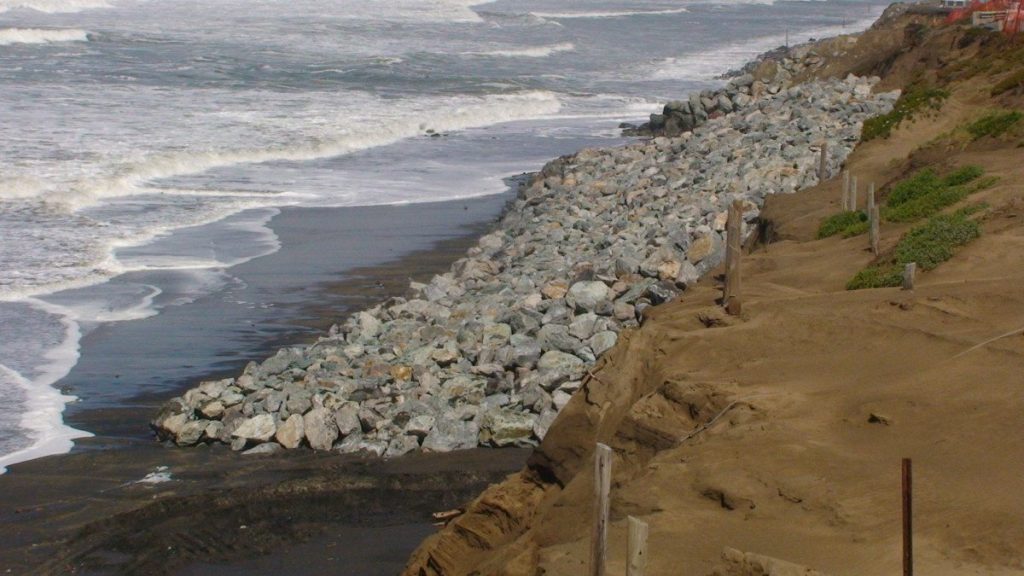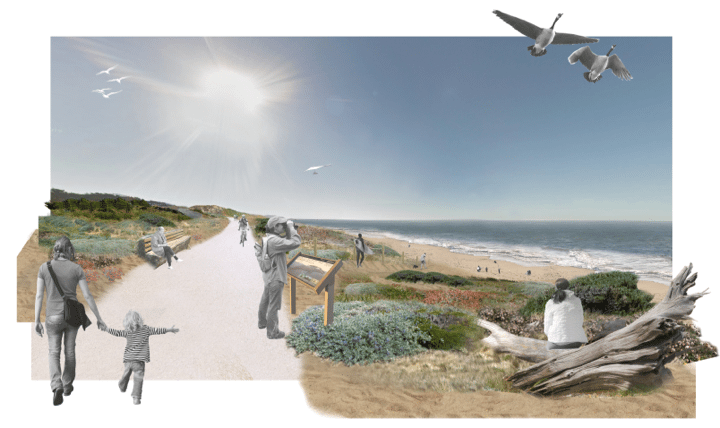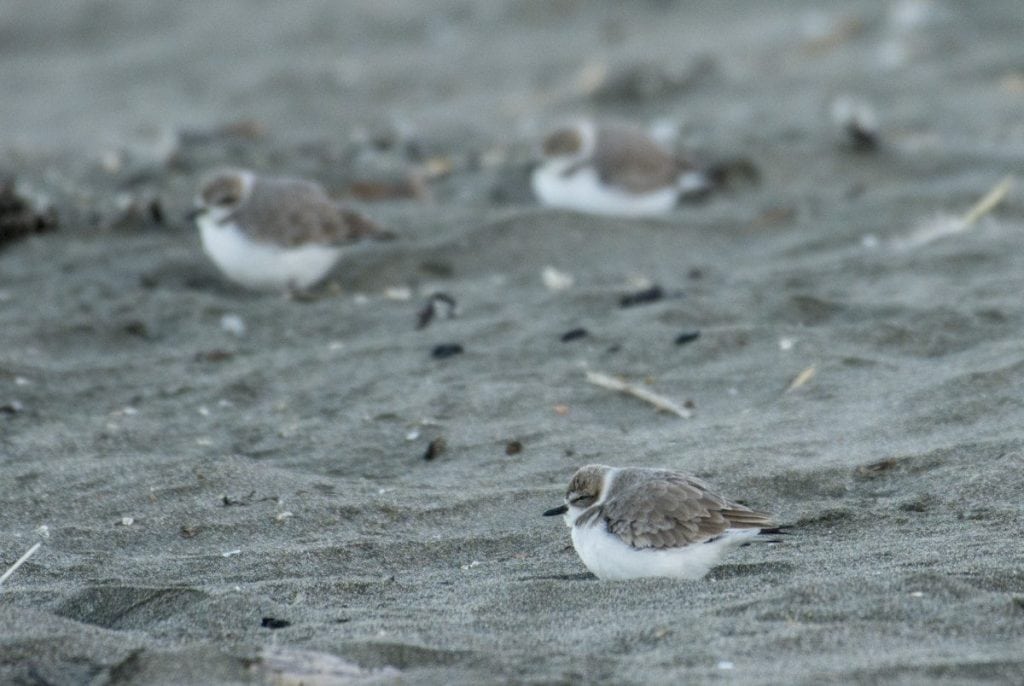Protect Ocean Beach and its habitat
By Bill McLaughlin
San Francisco’s western border is Ocean Beach, a fantastic open space for hiking, surfing, fishing, viewing wildlife, and more. Sloat Boulevard is the southernmost access point, located right in front of the entrance to the San Francisco Zoo.
Today, the Sloat area shoreline has become known as a flashpoint of coastal erosion and climate change. Over the years, the tidal boundary has advanced landward, washing away most of the sandy beach. During winter storms, waves collide against the base of the seaside parking lots, threatening the Great Highway coastal road as well as nearby wastewater infrastructure.
In 1997, 1998, and 2010, El Niño storms triggered emergency-level threats for the infrastructure. This led the San Francisco Department of Public Works to construct large boulder revetment structures on the beach. Erosion has progressed so far that construction fill that comprises the road base routinely spills out onto the beach. Instead of cleaning up all this debris, the City leaves all the rock on the beach to protect the infrastructure. However, this crude form of protection degrades access to the water, covers what remains of the beach, and removes habitat for shoreline birds such as the threatened Western Snowy Plover. The latest revetment of 2010 even covers part of the Fort Funston bluffs, which contain nesting sites for the threatened Bank Swallow.


Since the late 1990s, Surfrider Foundation and others in the community have been fighting for a plan to clean up and restore this area of Ocean Beach. To accomplish our goal, we are backing a plan of “managed retreat.” Managed retreat at Sloat would involve long-term planning to relocate threatened infrastructure away from the sea. Sand replenishment in front of the road has been attempted numerous times – with poor results. Recent sand replenishment projects were washed away within three years or less. We believe that managed retreat planning is the best option to effectively safeguard the infrastructure. The additional beach area gained through managed retreat also allows sand replenishment a much better chance to be effective, all while benefiting the near-shore ecosystem.
The good news is that in 2012 representatives from key government agencies and community stakeholders (including Golden Gate Bird Alliance) came together to forge a strategy to solve the Sloat erosion crisis. The result was the Ocean Beach Master Plan (OBMP).
The OBMP calls for: managed retreat of the road and parking lots, removal of rock from the beach, restoration of the sandy shoreline by constructing sand dunes, and a low-impact, buried seawall to protect the remaining wastewater infrastructure. If implemented, the beach along with its shorebird habitat would be restored. The challenge now is to ensure the OBMP recommendations come to fruition in an actual City project.


We need help from all concerned to keep the pressure on decision makers to build the Master Plan recommendations for managed retreat and shoreline restoration. In this era of climate change and sea level rise, acute erosion will eventually threaten more of the shoreline at Ocean Beach. We encourage all members of the community to help us preserve Ocean Beach thru long-term managed retreat planning.
Surfrider Foundation has a petition circulating right now that will help in these efforts. Please sign and share it with your friends!
Bill McLaughlin is a long time Outer Sunset neighborhood resident, surfer, and activist with the San Francisco chapter of the Surfrider Foundation. He relishes the wild open space that is Ocean Beach, its world-class waves, the amazing views of the Pacific, and all the wildlife that dwell there.
For more information on the Restore Ocean Beach campaign, see sloaterosionob.blogspot.com. For information on the Ocean Beach Master Plan, see spur.org/ocean-beach
